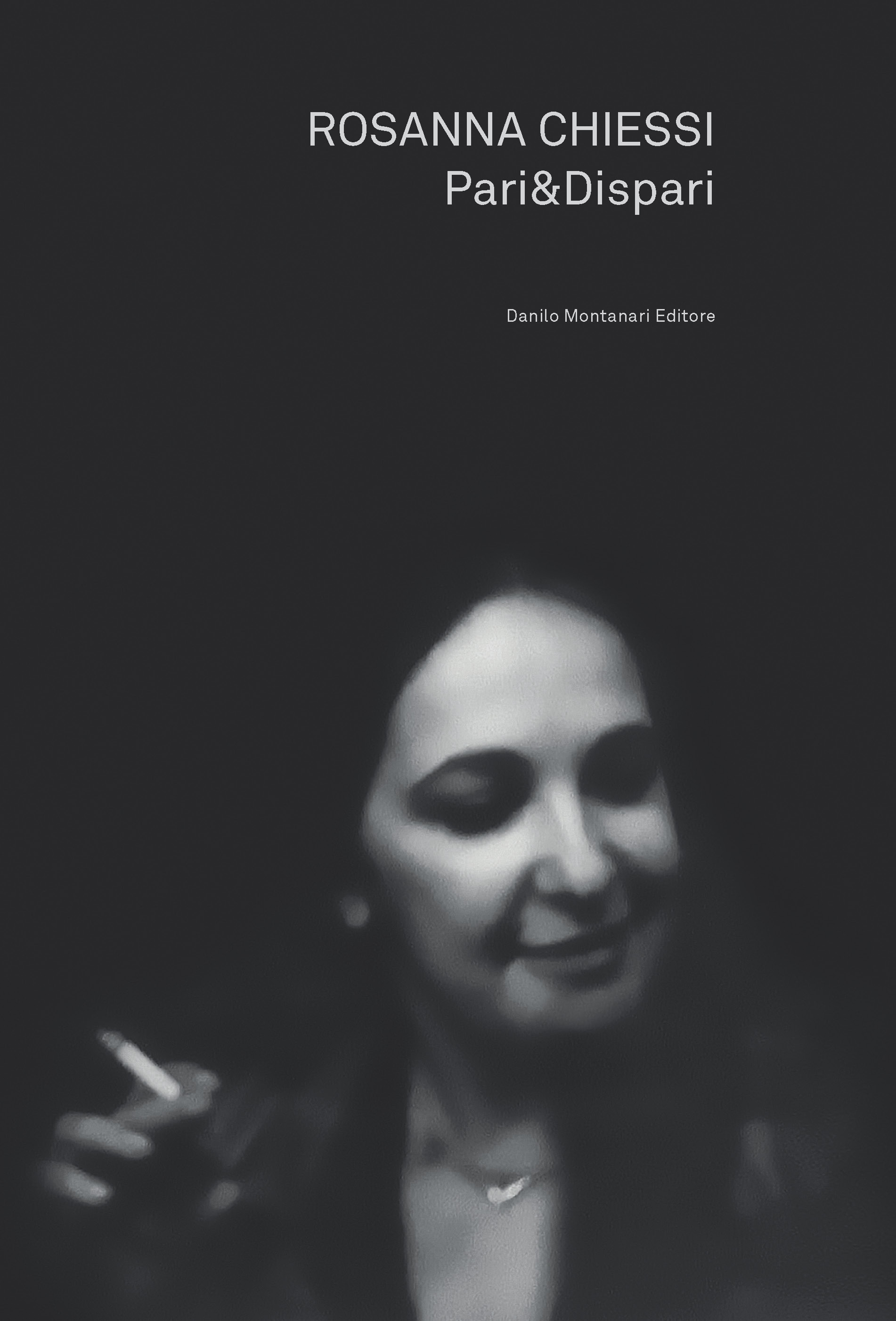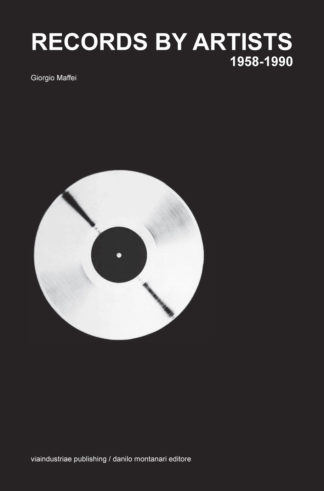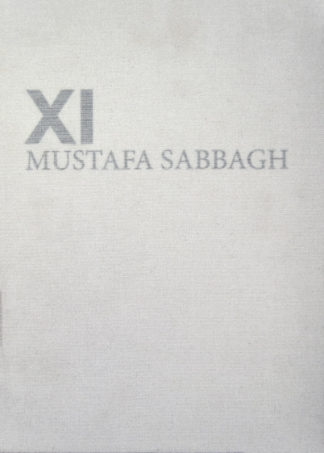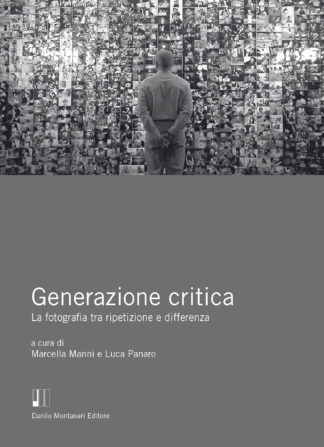Descrizione
Il mio primo contatto con l’Archivio Pari&Dispari e la Biblioteca Panizzi di Reggio Emilia risale a quasi un anno fa, quando mi fu da loro prospettata la possibilità di collaborare ad un progetto espositivo legato alla documentazione delle importanti esperienze in ambito performativo derivate dal lavoro di Rosanna Chiessi.
Si trattava di un percorso per immagini che poneva l’attenzione su diversi eventi, mostre e performance organizzati da Chiessi per la fiera di Bologna e in numerosi altri luoghi. Quelle descritte dalle immagini che mi venivano mostrate erano esperienze storiche, fondamentali per l’evoluzione della pratica artistica così come della sua trattazione e visibilità, anche e soprattutto per il prestigio e il livello degli artisti internazionali coinvolti e la rilevanza assoluta delle loro opere. A titolo di esempio voglio citare il progetto di Chiessi (insieme a Peppe Morra) per ArteFiera del 1976, anno in cui lo stand di Pari&Dispari fu trasformato in un palco (l’idea iniziale – non realizzata a causa della contrarietà della fiera – era un tendone da circo) che ospitò otto performance, una per ogni giorno di apertura, rispettivamente di Hermann Nitsch, Joe Jones, Takako Saito, Giuseppe Desiato, Geoff Hendricks, Urs Lüthi, Franco Vaccari e Heinz Cibulka.
La visione delle immagini di questo particolare avvenimento, unite a quelle delle numerosissime fotografie che Chiessi raccolse durante gli anni di attività con perizia e rigore per essere poi riproposte – ordinate e commentate personalmente con aneddoti e dettagli – negli album ora custoditi alla Biblioteca Panizzi di Reggio Emilia, ha immediatamente provocato in me una viva curiosità mista a una sincera emozione per questo racconto di vita e per questa figura, così radicalmente ancorata al territorio in cui ha lavorato ma anche così efficacemente aperta all’estero e alle nuove tendenze.
Ho subito pensato che questo eccezionale materiale meritasse più della semplice esposizione di una ristretta selezione di fotografie. A partire da queste immagini, da questi racconti e da queste esperienze si poteva strutturare un percorso più ampio che restituisse la giusta dimensione e il giusto peso a quello che Rosanna Chiessi e il suo impegno hanno significato per un territorio specifico, un contesto creativo e diverse generazioni di artisti. Questa poteva essere l’occasione per rimettere insieme alcune opere, molte delle quali mai mostrate in uno spazio pubblico, che testimoniassero l’incredibile percorso di Rosanna Chiessi e Pari&Dispari.
Una volta messo a fuoco il contenuto si trattava di trovare il giusto contenitore. A questo proposito abbiamo immediatamente pensato alla Project Room del MAMbo come il luogo più adatto per ospitare questo evento espositivo. Il MAMbo è Museo d’Arte Moderna di Bologna e, come istituzione pubblica votata all’arte moderna e contemporanea della città, ha tra i propri ruoli fondamentali quello di indagare, approfondire e divulgare il contesto artistico del territorio in cui si trova. A questo specifico obiettivo è interamente dedicata la programmazione della Project Room del museo: una sala autonoma, significativamente collocata nel bel mezzo delle collezioni permanenti, che ospita progetti temporanei dedicati all’esposizione di eccellenze artistiche particolarmente significative o rilevanti per la storia del territorio. La nuova vocazione di questo spazio e la dimensione temporale dei progetti che ospita permettono un approccio scientifico più radicale, ancorato alla ricerca storica/archivistica, più facilmente aperto a collaborazioni – come in questo caso – con importanti enti di studio e conservazione.
Il progetto era delineato e il luogo era deciso; a questo punto arrivava il compito più complicato ma anche più entusiasmante: selezionare tra questa enormità di materiali (album, foto storiche, opere, racconti, edizioni, pubblicazioni) gli oggetti e i riferimenti che potessero raccontare al meglio Rosanna Chiessi, il suo lavoro e la sua eredità a due anni dalla scomparsa. Premesso che l’esaustività in questo contesto non è possibile (e forse sensata) in quanto troppi sono gli spunti, i dettagli e le narrazioni per racchiuderli tutti in una stanza; la scelta è stata quella – dovuta anche al contesto museale in cui ci si trova – di partire dalle opere: protagoniste e testimoni della storia e delle storie di Rosanna Chiessi.
Grazie al preziosissimo aiuto dell’Archivio Storico Pari&Dispari – Rosanna Chiessi e di un importante collezionista che ebbe modo di frequentare e sostenere le mostre e le iniziative di Pari&Dispari siamo stati in grado di rintracciare molte e importanti opere, alcune delle quali vengono mostrate per la prima volta al pubblico.
La mostra si apre con il ritratto di Rosanna Chiessi di Ann Tardos e con la chiave simbolo di Pari&Dispari di Giulio Bizzari e Corrado Costa, realizzata in ferro da Bruno Picariello, ricalcando il titolo e la natura del progetto.
Una volta entrati in mostra l’allestimento tenta di ricreare quell’atmosfera creativa densa di racconti e intrecci che era propria dell’azione e della vita di Chiessi, con le opere alle pareti e nelle teche tutte attorno a un grande tavolo rotondo, per la prima volta esposto al pubblico, testimone silenzioso ma protagonista di tante delle performance organizzate a Cavriago, di cui la mostra narra come quando, l’11 maggio 1989, nel giorno del compleanno di Rosanna, Charlotte Moorman le volle fare una sorpresa dedicandole una performance. Coprì il tavolo con petali di rose rosse, vi mise sopra il leggio e cominciò a suonare pezzi di vari autori con il suo violoncello.
La disposizione delle opere sulle pareti che compongono la sala espositiva segue un ordinamento tematico non rigoroso, suggerendo al visitatore dei possibili percorsi ma lasciando anche la possibilità aperta di creare le proprie connessioni, i propri accostamenti visivi o concettuali.
Le opere della prima parete ruotano attorno ad uno degli interessi e degli ambiti di ricerca dominanti nel lavoro di Rosanna Chiessi: l’attenzione al medium della performance e alla sperimentazione in merito a questo tipo di espressione artistica anche con influssi partecipativi e collettivi. Trovano spazio in questo contesto, ad esempio, le opere di Alison Knowles, Allan Kaprow, Dieter Roth, Philiph Corner e la sedia che Geoff Hendricks usò al centro della propria performance alla fiera di Basilea del 1975.
La grande parete centrale è dedicata all’interesse di Chiessi per gli artisti orientali e, in particolare, per il movimento Gutai, con una grande opera di Shozo Shimamoto accostata alle scarpe che l’artista ha utilizzato nella performance pubblica a Palazzo Magnani a Reggio Emilia nel 2011. Alcuni oggetti, come le scarpe di Shimamoto o il soprabito di Joseph Beuys, sono uniti nel percorso di mostra alle opere vere e proprie tentando di restituire quella predisposizione alla “produzione” di nuove opere e ad un rapporto intimo con gli artisti che ha pervaso l’azione di Chiessi.
Proseguendo nel percorso di mostra si arriva alla grande parete dedicata alla musica e al suono, per tutta la sua vita elementi essenziali e costitutivi della ricerca di Rosanna Chiessi. Le opere di Nam Jum Paik, Charlotte Moormann, Giuseppe Chiari e Urs Luthi illustrano questo filone di ricerca, che trova il suo momento più significativo nel concerto Fluxus al teatrino Dante di Cavriago, organizzato nel 1977 e diretto da Geoff Hendricks, Joe Jones e Takako Saito, che suonarono brani, tra gli altri, di George Brecht, Dick Higgins, George Maciunas, Robert Watts. Nei suoi album Rosanna Chiessi ricorda come la partecipazione e il divertimento non mancarono specialmente quando i componenti dell’orchestra scesero in platea legando gli spettatori alle loro sedie.
Il percorso si conclude lasciando aperta questa storia e cercando di rappresentare visivamente quanto ampliabile e amplificabile era ed è ancora il messaggio di Rosanna Chiessi; come si è detto espressione altissima di un particolare territorio ma anche conscia e profonda viaggiatrice, scopritrice di talenti e avanguardista. Aperto all’altro, allo straniero, al diverso è sempre stato il suo approccio e il suo viaggio non si poteva che concludere con le mappe e i mezzi per continuare questo viaggio: ecco quindi la grande mappa di Prinzendorf di Hermann Nitsch e l’edizione con il retro dei camion di Franco Vaccari. Recuperando nuovamente i pensieri di Chiessi custoditi negli album che sono alla base dell’intero progetto: “Nel 1974 organizzai una corriera che partiva da Reggio Emilia per Prinzendorf, castello di Nitsch vicino a Vienna, dove Hermann svolgeva la sua spettacolare azione di teatro che durava 24 ore. Partimmo al mattino alle quattro e l’autista ci scambiò per una squadra di pallavolo. Raccolsi più di venti adesioni tra amici, collezionisti ed artisti tra i quali ricordo Franco Vaccari, Takako Saito e Peppe Morra. Fu indimenticabile: rituali nel grande cortile, nel parco, nelle cantine e nelle soffitte. Il tutto fu allietato, fino alle luci del mattino, da musica e danze, con cibi cucinati da Peter Kubelka”.
“La mia amicizia con Franco risale agli inizi degli anni ’70 quando progettammo l’edizione “I camions”. Vaccari fotografò per settecento chilometri, in macchina, la parte retrostante dei camions che lui stesso dopo sorpassava. Il lavoro ebbe molto successo”.
La mostra la immaginiamo così, come il lavoro di Rosanna Chiessi, un infinito viaggio con gli amici artisti, accompagnandoli nella realizzazione delle loro opere. Per sempre.
(Lorenzo Balbi)
My first contact with the Pari&Dispari Archive and the Panizzi Library of Reggio Emilia dates back to nearly a year ago, when I was given the opportunity to collaborate in an exhibition project tied to documenting important performance experiences derived from the work and career of Rosanna Chiessi.
This consisted in a visual trajectory comprised of images dedicated to many events, exhibitions, and performances organized by Chiessi for fairs in Bologna and several other places. The experiences described by the images I was shown were truly historic experiences, ones that were crucial for the evolution of artistic practice as well as for its treatment and visibility, even and especially due to the prestige and level of the international artists involved as well as the relevance of their works. As an example, I would like to cite the project Chiessi realized (with Peppe Morra) for ArteFiera in 1976, the year in which the Pari&Dispari stand was transformed into a stage (the initial idea—which went unrealized due to the fair’s opposition—was to create a circus tent) that hosted eight performances, one for each day of the fair, by Hermann Nitsch, Joe Jones, Takako Saito, Giuseppe Desiato, Geoff Hendricks, Urs Lüthi, Franco Vaccari, and Heinz Cibulka.
Viewing the images from this particular event, together with those of the countless photographs that Chiessi had carefully gathered during those years to later re-present them—put into proper order and accompanied by colorful anecdotes and personal details—in albums now conserved by the Panizzi Library in Reggio Emilia, immediately provoked in me a lively curiosity and a genuine emotion for the life story of this figure, who was radically anchored to the region in which she worked, but also so open to foreign influences and to new tendencies.
I immediately thought that this exceptional material deserved more than the simple exhibition of a restricted selection of photographs. Starting from these images, tales, and experiences, one could then structure a broader trajectory that would return the proper dimension and appropriate weight to what Chiessi and her commitment had meant for a specific territory, a creative context, and several generations of artists. It occurred to me that this could be the occasion to once again put together certain works, many of which had never been shown in a public space, works that could testify to the incredible career of Rosanna Chiessi and Pari&Dispari.
Once we had honed in on the right content, it was time to find the right container. We immediately thought of the Project Room of MAMbo as the most appropriate place to host this exhibition event. MAMbo is the Museum of Modern Art in Bologna and, as a public institution devoted to modern and contemporary art, has among its most important roles that of exploring and expressing the artistic context of the region in which it finds itself. The Project Room’s programming is devoted entirely to this specific objective: an autonomous hall, located (not by chance) in the middle of the permanent collections, which hosts temporary projects dedicated to exhibiting artistic excellence that bears special relevance to the region in question. The new vocation of this space and the temporal dimension of the projects it hosts allowed for a more radical scientific approach, one anchored in historical, archival research, which made it a space more easily open to collaborations—as was true in this case—with important research and conservation projects.
Once the project was outlined and the space was chosen, there came the most complicated but also most exciting task, that of selecting, among the enormity of materials available (albums, photos, works, stories, edition, publications) the objects and references that could best narrate the life and work of Rosanna Chiessi, as well as the legacy of her work two years after her passing. Given that exhaustiveness, in this context, was not possible (and perhaps even undesirable) because there were simply too many references, details, and narratives for a single room, the choice—due in no small part to the museum context we had chosen—was to start from the works themselves: protagonists and witnesses of the history and stories of Rosanna Chiessi.
Thanks to the extraordinary help of Pari&Dispari’s Rosanna Chiessi archive and an important collector who had been present for and contributed to exhibitions and initiatives of Pari&Dispari, we were able to track down many important works, some of which are now being shown publically for the first time.
The exhibition opens with Chiessi’s portraits of Ann Tardos and the “key” symbol of Pari&Dispari designed by Giulio Bizzari and Corrado Costa, cast in iron by Bruno Picariello, tracing the title and nature of the project.
Once one has entered the exhibition, the show tries to recreate the creative atmosphere of Chiessi’s life and action, an atmosphere so dense with stories and interconnections, with works on the walls and in cases surrounding a round table, for the first time exhibited in public, a silent witness and protagonist of many of the performances organized at Cavriago, like the one from May 11th, 1989, in which, the exhibition describes, Charlotte Moorman (on Rosanna’s birthday) wished to surprise her with a performance dedicated to her. She covered the table with red rose petals, placed the music stand atop it, and began to play various pieces on the cello.
The placement of the works on the walls in the exhibition hall follows a not especially rigorous thematic order, suggesting possible paths to visitors but also leaving them open to create their own visual and conceptual connections. The works on the first wall revolve around one of the research interests predominant in Chiessi’s work: an attention to the medium of performance and to experimentation within this type of artistic expression, including participatory and collective influences. In this context, for example, we find the works of Alison Knowles, Allan Kaprow, Dieter Roth, Philip Corner, and the chair that Geoff Hendricks used at the center of his performance at the Basel fair in 1975.
The large central wall is dedicated to Chiessi’s interest for Asian artists and, in particular, for the Gutai movement, with a great work by Shozo Shimamoto placed near the shoes the artist used in the public performance in 2011 at Palazzo Magnani in Reggio Emilia. Certain objects, such as Shimamoto’s shoes or Beuys’ overcoat, are paired throughout the exhibition with actual works and reflect the intimate rapport with artists that characterized Chiessi’s work.
Following the track of the exhibition, one arrives to the great wall dedicated to music and sound, which were for her whole life essential and constitutive elements of Chiessi’s work as critic and curator. The works of Nam June Paik, Charlotte Moorman, Giuseppe Chiari, and Urs Luthi illustrate this lineage, which finds its most significant moment in the Fluxus concert at the small Teatro Dante in Cavriago, organized in 1977 and led by Geoff Hendricks, Joe Jones, and Takako Saito, who performed works by, among others, George Brecht, Dick Higgins, George Maciunas, and Robert Watts. In her photo albums, Chiessi remembers how fun and participatory the event was, especially when the orchestra member descended on the floor and tied the audience to their chairs.
The exhibition comes to an end by leaving the story open and seeking to visually represent how malleable and expandable Chiessi’s message still is, as the highest expression of a specific region but also as a conscious, profound explorer, discoverer of talents, and avant-garde thinker. Open to the other, to the foreign, to the different—this kind of openness always characterized her journey, hence the great map of Prinzendorf by Hermann Nitsch and the edition with the backs of trucks photographed by Franco Vaccari. The show also offers the possibility of rediscovering Chiessi’s thoughts through the albums that are the basis for the whole project: “In 1974, I organized a bus from Reggio Emilia to Prinzendorf, Nitsch’s castle close to Vienna, where Hermann undertook his spectacular theatrical show lasting 24 hours. We left at four in the morning and the driver confused us for a volleyball team. I met so many people, artists, and collectors, among whom I recall Franco Vaccari, Takako Saito, and Peppe Morra. It was truly unforgettable: rituals in the yard, in the park, in the cantinas, and in the attics. Everything was cheerful, until the light of morning, animated by music and dance, with food cooked by Peter Kubelka.” More: “My friendship with Franco dates to the start of the ‘70s, when we began planning the edition “I camion.” Vaccari photographed, for 700 kilometers, from a car, the backs of trucks that he was passing. The work had great success.”
This is how we conceive of the exhibition, like Rosanna Chiessi’s work—an infinite voyage with artist friends, accompanying them in the realization of their works. Forever.




